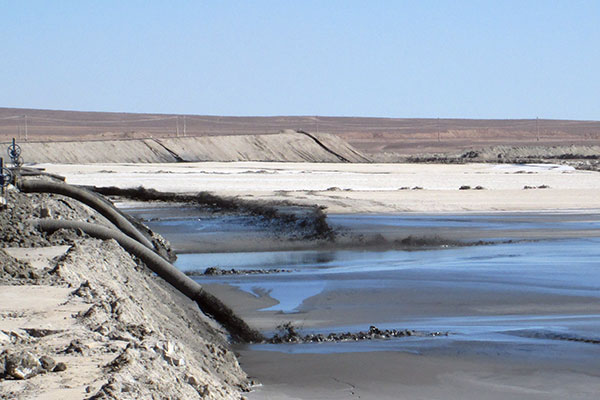How to comprehensively utilize tailings?

Tailings are components produced in beneficiation operations with low content of useful components that cannot be economically used in industrial production at present, and are also the main components of industrial solid waste. At present, the output of metallic ore, non-metallic ore, coal and clay produced by various countries in the world is huge every year, and the amount of tailings produced is also quite huge.
1. Why should tailings be comprehensively utilized?
Tailings have seriously hampered the green and sustainable development of the mining industry, and have also become an important factor that damages the environment and endangers safety. Only by making comprehensive use of them can we solve various problems caused by tailings and realize the profit increase of mining enterprises.
(1) The tailings are rich in recoverable components
The ore types in my country are mainly associated ores, which account for 80% of the total mineral resources, and it is difficult to sort them. In addition, the beneficiation and smelting technology of the early mines was relatively backward, and the economic conditions in different periods were not the same. Usually, only one or several minerals in the ore can be recovered. This makes non-ferrous metals, rare metals, precious metals and a large number of non-metallic minerals remain in the tailings. With the current dressing and smelting technology, it can be completely recycled to supplement the increasingly depleted mineral resources.
(2) Non-metallic resources are abundant in tailings
The tailings contain a large amount of quartz, feldspar, hornblende, pyroxene, calcite, dolomite, and silicate minerals and magnesium silicate minerals produced by corrosion. The main chemical components are silicon, aluminum, calcium, and magnesium. etc., wherein the content of silicon and aluminum is higher. Therefore, it is very necessary to make full use of tailings resources, especially the non-metallic resources contained therein.
(3) Tailings are seriously harmful
At present, the tailings disposal method is still mainly based on tailings stockpiling, which will occupy a large amount of agricultural and forestry land and destroy the allocation of land resources in the area where it is located. In addition, mine concentrators in some remote areas or small township concentrators will discharge tailings directly into the natural environment, causing great damage to the environment. It is urgent to eliminate tailings through multiple comprehensive utilization methods.
(4) The comprehensive utilization of tailings has high economic benefits
In order to protect mineral resources, maintain ecological balance, and implement a virtuous circle, industrially developed countries in the world have begun to build “secondary raw material industries” and have achieved remarkable results. The tailings stockpiled in my country generally have higher grades, especially the tailings in the 1950s and 1960s, which have greater development and utilization value. Moreover, compared with the development of new veins, the cost of tailings exploration is lower, and the exploration results are more accurate. At the same time, the transportation around the tailings pond is convenient, and the infrastructure is relatively complete, which can greatly invest in infrastructure. The tailings in the tailings pond are relatively loose and the particle size is finer. Only a small amount of crushing and grinding operations are required, and the energy consumption is low and the production cost is low.
2. What are the comprehensive utilization methods of tailings?
(1) Secondary separation of tailings
The total amount of tailings is large and there are many types. The following will introduce iron tailings, copper tailings, lead-zinc tailings and rare earth tailings as examples:
(2) Tailings are used as raw materials for building materials
Elements such as Si and Al contained in tailings are essential components for the production of building materials, so tailings can be used as raw materials for building materials production.
At present, the state advocates equipment-based buildings, prohibits mountain quarrying, and recommends resource utilization of solid waste to promote efficient use of solid waste. Using tailings as raw materials for building materials can not only achieve mass consumption of tailings, but also solidify/stabilize harmful substances in tailings and prevent the migration of harmful substances. Currently, tailings are mainly used as raw materials for building materials such as concrete and ceramics.
(3) Application of tailings in agricultural production
There are three main applications of tailings in agriculture, namely the preparation of chemical fertilizers, use as a soil conditioner, and tailings reclamation.
Tailings usually contain trace elements necessary for plant growth, such as Zn, Mn, Cu, Mo, V, B, Fe and P, etc. After a series of treatments, the tailings can be made into fertilizers, which can Improving soil structure and improving soil fertility can enable crops to grow vigorously and increase agricultural production.
The main principle of using tailings as a soil improver is that the components contained in tailings can react with harmful substances in the soil, prevent the migration of harmful substances in the soil, effectively repair the polluted soil, reduce the migration of pollutants, and reduce the migration of pollutants. While improving the environment, it also eliminates the tailings and realizes the treatment of waste with waste.
(4) Tailings backfilling
Tailings backfilling can consume a large amount of tailings, and is an extremely effective technology for tailings reduction and utilization. There are many types of tailings backfilling technologies, among which cemented filling technology is the most commonly used at present. This technology is to mix inert materials such as fine sand and appropriate amount of gel materials with water to make filling materials, which can improve the recovery rate of ground mining. In tailings backfilling, tailings are often used together with other solid wastes to prepare filling materials and backfilled to mine goafs or other underground vacant areas due to engineering construction.
